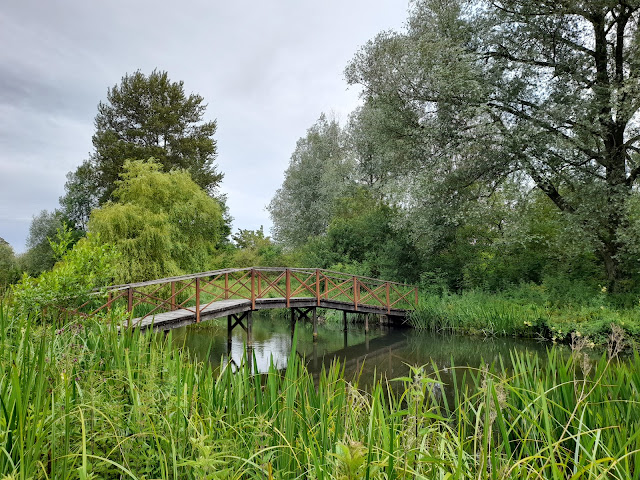River Kennet, Craven Fishery
I often attend business networking events in my line of work, which usually means visits to restaurants, gala dinners and live sports events. Never before had I enjoyed the pleasure of mixing my professional life with fly fishing but that changed in June when an industry acquaintance invited me to a corporate day at the Craven Fishery on the River Kennet. And what a lovely day it was spent in tranquil surrounds and good company, with a fine pub lunch thrown in. The invitation allowed me to tick off another well-known fishing estate on the River Kennet without a quid being spent, leaving just Barton Court and the Hungerford Water of the main fisheries for me to visit.
When the initial meeting and greetings were out of the way, I was encouraged by the river keeper to sneak away for half an hour to see if I could rise a fish (“best you go now before the water gets thrashed by this lot”). Earlier, it had been refreshing to set off from home without having to worry about taking along any of my fly fishing gear but sent off by the keeper with only a rod, two dry flies, a tube of floatant and a net, I now felt somewhat under-gunned for the task.
So, whilst the tyros in the group lined up on the grass beside the river for a casting lesson, I slipped away unnoticed downstream, on the look-out for a rising fish. The fishery has a dry fly only rule until the first day of July, a rule which would be bent to provide the novices in the group the best chance of catching a trout. I knew from prior experience that succeeding with a dry fly on the Kennet is a hit and miss affair, but the morning was still fresh and the sky overcast, so I thought I had a chance.
The main river slowed in pace and became deeper as I moved downstream, a far cry from the shallow riffles and gravel runs which I had seen near the top of the beat. Given that the Craven Fishery takes part of its water direct from the churned-up Kennet and Avon canal, the clarity and quality of the water was much better than I had hoped for, even if the deeper pools were mysteriously opaque. I spotted some very large chub from a footbridge and later, another fish which looked like a permit from the tropics, which I suspected was a bream.
Near the bottom limit of the beat a vast, ancient oak leaned over the river. Beneath the tree, in the shaded water, I saw the welcome sight of a rising trout. A cast from downstream of the oak was impossible so I sent out a perpendicular cast, imparted an upstream mend, and was delighted when the trout idled up to my deer hair sedge and consumed it in a graceful exhibition of nature’s geometric precision. Thank goodness for the long-handled net in my possession, which I needed to reach over the reeds to claim and return my early morning’s prize.
When I released the trout, I was a surprised to witness not one but two trout rising in the shade of the oak. I sent out a cast to the nearest and when the drift was perfect, perhaps on the third attempt, the trout took my sedge confidently. This one was smaller than the first and didn’t give as good an account of itself, but I was thrilled to have two trout into the net so soon.
The remaining trout had grown wise to the commotion and resisted both my sedge and the spare CDC pattern, although it came up to scrutinise each pattern in turn.
Shortly before our visit to the fabulous Red House pub for lunch, where I enjoyed a terrific roasted lamb rump, I had a further occasion to sneak away from the maelstrom of swishing rods and slapping lines. I chose to follow the carrier stream this time, armed once again with the same rod and dry fly. I spotted a brace of trout which were happily nymphing, which I elected not to cast to as they seemed far too preoccupied on the riverbed.
Finally, in the shallow tail of the hatch pool where the carrier drew its water from the main river, I saw a trout hurriedly rise to snatch a natural fly from the surface. It looked smaller than the stocked trout I had seen and caught and I wondered if it was a wild trout. The fish took my dry fly at the first attempt and, hearing the disturbance, the river keeper came over to net the trout, exclaiming "ah, one of our wild trout!" When he held it in his hands he scrutinised its shape and mulled its provenance, eventually settling on it being a stockie. In the grand scheme of things it didn't matter very much, but it would've been a good size for a wild trout, and it seemed a very close judgment call!
I was very pleased with my morning’s catch return. Best of all, it was done free of charge and on a working day!








Comments
Post a Comment
Thank you for taking an interest in my fishing diary. I appreciate your feedback.